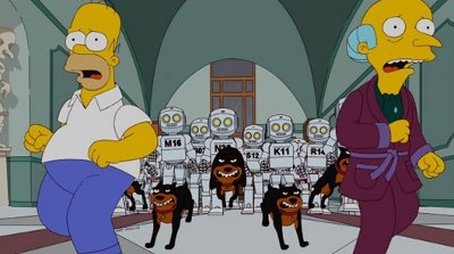
Sorry, we have not watched this yet.

When Mr. Burn replaces most of the plant's employees with robots that end up turning on the community, the people he laid off must come to the rescue.
Sorry, we have not watched this yet.